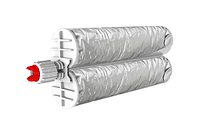FEICA Outlines Position on Packaging and Packaging Waste Regulation
When reviewing revisions to EU packaging and packaging waste regulation, innovative packaging that may not be covered by the design for recycling criteria should be allowed to prove recyclability through testing.

spukkato, iStock / Getty Images Plus
On November 30, 2022, the European Commission published a proposal for a revision of EU legislation on packaging and packaging waste that is now going through the co-decision procedure. Details about the proposed revision can be found here.
FEICA fully upholds the objectives of the new proposal and is actively engaged in the legislative process. It asserts that updating the legislation would speed up the transition to a circular EU economy and a climate-neutral Europe. A strong regulation would harmonize packaging recycling requirements throughout Europe, lessen market barriers, and simplify the compliance work of economic operators.
Over the years, adhesives have played a successful part in circular value chains, such as in plastic, glass, paper, and multilayer packaging. The adhesives industry, together with stakeholders along the value chain, continuously evaluates and improves the compatibility of adhesives with the recycling of packaging waste.
A strong shift is occurring in packaging materials, a change in which material changes and light-weighting are leading a packaging transformation. Here, adhesives enable many innovations and the shift of materials. Therefore, changes in packaging material and design are made possible because of adhesives.
If adhesives are going to continue to support the goals of circularity and sustainability and avoid market disruptions or unfortunate substitutions, certain aspects need to be considered in the review of the packaging and packaging waste regulation. Whilst design for recycling criteria for packaging are important, it is also imperative that the whole supply chain work towards the goal of improved recycling. This means that collection, sorting, and state-of-the-art recycling processes are also key. New and innovative packaging that may not be covered by the design for recycling criteria should be able to prove their recyclability through testing.
FEICA held a webinar, “Adhesives In the context of paper and board recycling – state of play,” on March 30, 2023 where adhesive technologies, their chemistry, and many other pertinent issues were discussed. The speakers also highlighted some points of importance regarding testing and evaluation methods to encourage both cooperation within the supply chain and future discussions with stakeholders.
The presentation and recording of the webinar are available here.
Looking for a reprint of this article?
From high-res PDFs to custom plaques, order your copy today!






